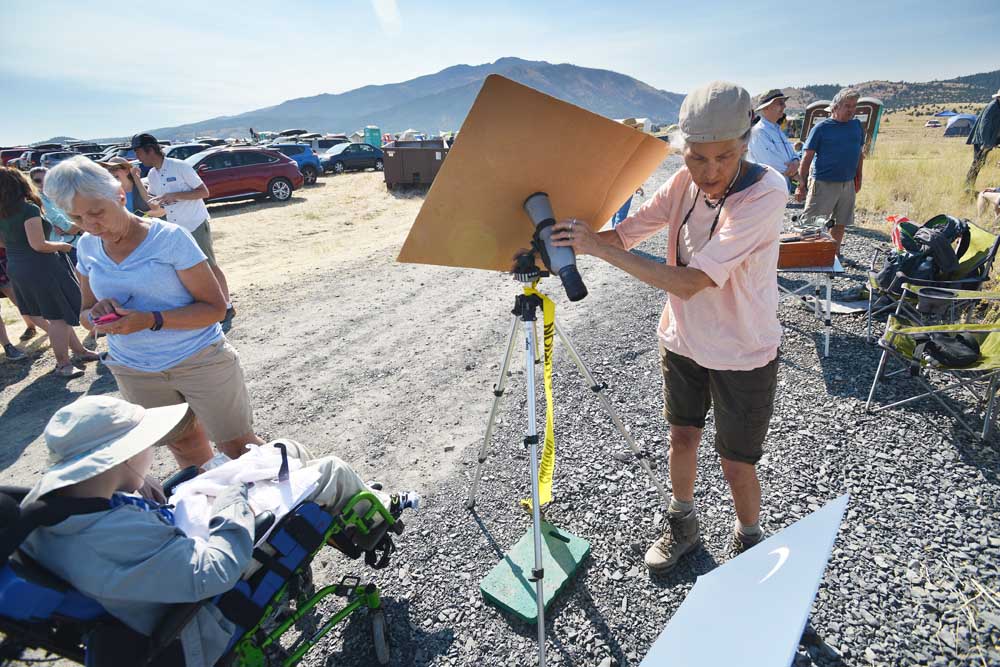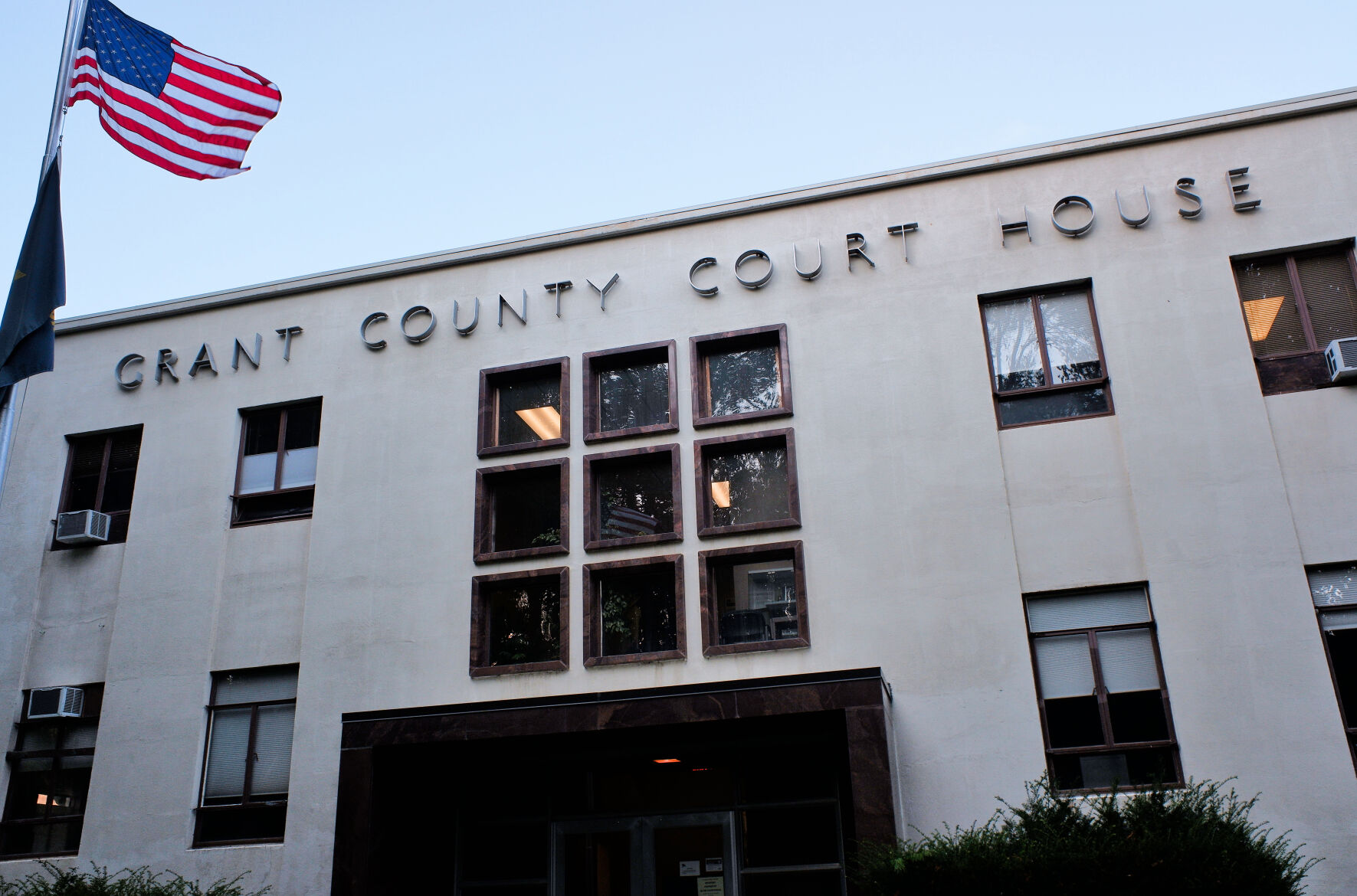Totally worth the trip
Published 1:36 pm Tuesday, August 22, 2017

- Lydia Bird of San Francisco adjusts a spotting scope she is using to project and image of the eclipse on a white piece of board on Monday in John Day.
Anticipation turned to cheers Monday morning in John Day as visitors from around the world celebrated the arrival of the 2017 total solar eclipse.
For about two minutes, the moon came in perfect alignment with the sun, casting an otherworldly darkness that left spectators in awe. The skies remained mostly clear throughout the morning, offering a pristine view of the cosmic dance. Then, just as quickly as it came, it was over and light returned.
Located deep within the path of totality, John Day played host to thousands of eclipse watchers who made the trip to witness the once-in-a-lifetime event. A large crowd gathered over the weekend at the John Day Industrial Park, where campers reserved their spots months in advance to experience the eclipse in its full glory.
According to travelers, it was well worth the trip.
Mike Ziemke, of Merrill, Wisconsin, drove two full days to John Day where he met his friend, Chuck Stewart, of Vancouver, Washington. The two astronomy buffs settled in Wednesday and spent every night stargazing through their telescopes and eagerly awaiting Monday’s eclipse.
Ziemke, who watched the 1979 total solar eclipse from his home in Wisconsin, described the experience as life-changing.
“It’s something that’s just unbelievable,” he said. “To think of all the people across the country coming together today, just to watch … you’ve got all walks of life.”
Kevin Knowles, an astronomy teacher at Mount Si High School in Snoqualmie, Washington, wore his enthusiasm on his sleeve — literally — with not one but two shirts adorned in planets and galaxies. He said he first heard about the eclipse in March while attending the National Science Teachers Association conference in Los Angeles, and made his arrangements.
“I would have loved to have this a few weeks later so I could have brought my whole class,” Knowles said. “Definitely, this brings alive everything I teach.”
For others, traveling to the path of totality was a last-minute decision. Patricia Johnson, of Sacramento, California, drove up to Oregon with her adult son, Edek Sher, who was home visiting from Rhode Island.
The two were not able to find eclipse glasses on such short notice anywhere in northern California. Fortunately, they were able to stop at the Powerhouse Science Center in Sacramento, where they learned how to make their own using paper, Popsicle sticks and decorated with crayons. The center also provided the proper viewing lenses.
“We were embarrassed,” Johnson said with a smile. “But we wanted to come prepared.”
A number of visitors traveled not just cross-country but across an ocean to see the uniquely North American event. Bart Verbrugge and his wife, Véronique, came all the way from their native Holland with their two children, Isabel, 11, and Jurien, 9.
Bart Verbrugge said he has witnessed two other solar eclipses in his life — one in northern France and the other in Zambia, Africa. But he wanted to be able to share the experience with his kids, so they flew together to Vancouver, British Columbia, Canada, about three weeks ago for vacation and made their way to John Day by Friday.
“We wanted to show the kids this awesome experience,” he said. “I just want to share with them this magical moment.”
Bernd Schatzman also flew in to the U.S. from Germany, where he met friends in Los Angeles before coming up to the path of totality together.
The feeling of watching an eclipse is incomparable, he said.
“It’s like some special kind of gray darkness,” Schatzman explained. “At the same time, the sun gets this silvery kind of shine.”
After totality, some at the industrial park decided to stay while others hit the road right away. Worries of severe traffic backups were perhaps overblown, according to Tom Strandberg with the Oregon Department of Transportation, who said only minor delays were reported along highways 395 and 26.
“It’s actually been a lot calmer than we anticipated,” he said. “People seem to be behaving, for the most part.”
The United States will not experience another total solar eclipse until 2024, and Oregon will not see another until 2108, when one is expected to graze along the coast.








